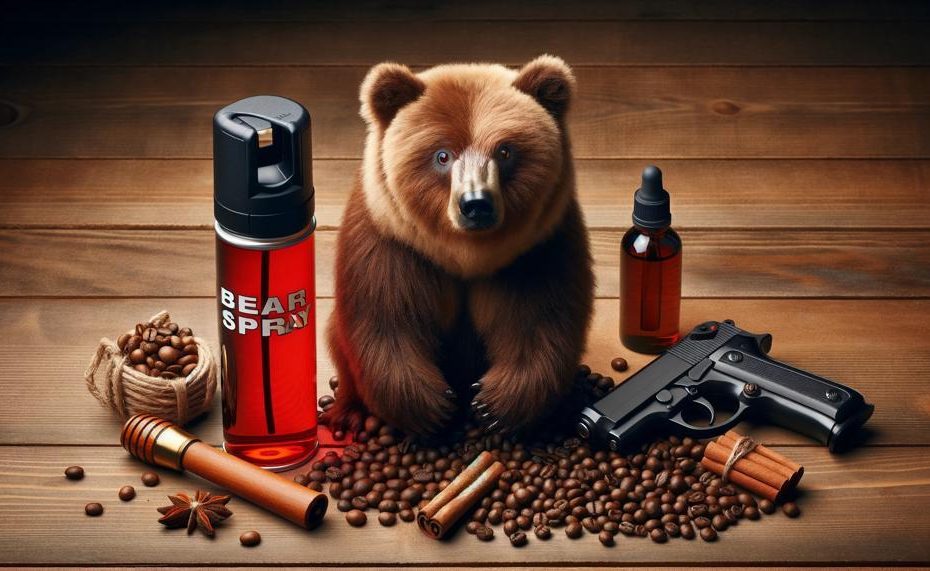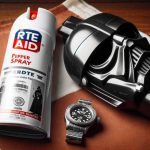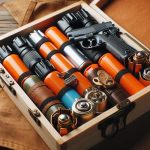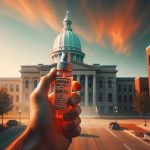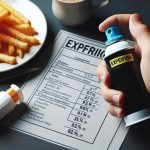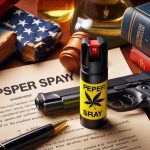When preparing for a journey in the great outdoors, should you choose to carry pepper spray or bear spray? It’s a dilemma that both outdoor lovers and others who are concerned about safety encounter often.
Given that they are both intended to halt an attacker in their tracks, both sprays may first seem to be identical, but there are several important differences that might spell the difference between a safe departure and a sticky situation.
We’ll go into the specifics of bear spray vs pepper spray in this blog article. Can you swap them out? Which one is stronger than the other? Which of Mother Nature’s more fearsome critters would you want attached to your belt in the event of a face-off? Prepare to dispel the mystery around these two self-defense sprays.
So, is bear spray the same as pepper spray?
Bear spray and pepper spray are not interchangeable. They have different ingredients, weights, volumes, and formulations. Bear spray is designed to deter bears, while pepper spray is designed to temporarily incapacitate human attackers.
Strap on your boots and let’s trek through the details to ensure you make an informed decision for your next wilderness adventure or urban outing.
Contents
- 1 Is Bear Spray The Same As Pepper Spray?
- 2 How is Bear Spray Different from Pepper Spray?
- 3 The Effectiveness of Bear Spray Against Bears
- 4 The Legal Implications of Using Bear Spray on Humans
- 5 The Strength and Potency of Bear Spray vs Pepper Spray
- 6 Comparing the Range and Dispersal Patterns of Bear Spray and Pepper Spray
- 7 Different Forms of Pepper Spray vs Fog Format of Bear Spray
- 8 Conclusion
Is Bear Spray The Same As Pepper Spray?
Bear spray and pepper spray are often thought to be interchangeable, but they are indeed formulated for different scenarios. To elucidate the distinctions, let’s examine their composition, intended use, and efficacy.
Composition of Sprays:
| Aspect | Bear Spray | Pepper Spray |
|---|---|---|
| Active Ingredient | Capsaicin | Oleoresin Capsicum (OC) |
| Concentration | 1% to 2% | 0.18% to 1.33% |
| Carrier Agent | Yes (for dispersion) | Yes (for mist formation) |
Purpose and Use:
| Aspect | Bear Spray | Pepper Spray |
|---|---|---|
| Designed For | Deterrence of bears and large animals | Self-defense against human attackers |
| Usage | Last resort in the wilderness | Law enforcement and personal protection |
Effectiveness:
| Aspect | Bear Spray | Pepper Spray |
|---|---|---|
| Efficacy Against Bears | 92% | 50% |
| Human Incapacitation | Less effective due to dispersal pattern | Highly effective within range |
| Range | Longer | Varies, but generally less |
| Dispersal Pattern | Wider | Narrower, targeted |
Bear spray is a mightier deterrent due to its higher capsaicin content and is regulated by the EPA to ensure its strength and reliability against large wildlife. Pepper spray, whilst legal in most locales, might be subject to rules or constraints and is tailored for efficiency against humans, with varying forms to suit different self-defence scenarios.
Utilising bear spray on humans could lead to severe consequences, legally and ethically, because of its robust nature and intended purpose for wildlife.
How is Bear Spray Different from Pepper Spray?
Bear spray and pepper spray are each tailored for specific threats and scenarios. The table below summarizes the critical variations in their composition and effectiveness as deterrents or self-defense tools.
| Aspect | Bear Spray | Pepper Spray |
|---|---|---|
| Capsaicinoid Concentration | Typically 1-2%, optimized for deterring bears | Usually around 10%, formulated for stopping humans |
| Intended Use | To deter aggressive behavior in bears and other large wildlife | For personal defense against human attackers |
| Spray Range | Up to 30 feet, allowing a safe distance from the animal | 6-12 feet, intended for close encounters |
| Legal Designation | Labeled as an animal repellent | Considered a self-defense weapon |
| Safety and Legal Considerations | Must be used with caution, especially in proximity to people | Regulated by law; users should be familiar with local regulations |
The Effectiveness of Bear Spray Against Bears
When facing a mighty bear, bear spray is your ally, not your foe. This potent deterrent boasts an impressive track record, shielding humans from harm’s way with a cloud of discomfort aimed at these colossal creatures.
| Aspect | Bear Spray | Pepper Spray |
|---|---|---|
| Intended Use | Specifically for deterring bears | Personal defense against humans |
| OC Concentration | Higher, regulated by EPA | Lower concentration |
| Mode of Action | Aimed downward to create a cloud | Aimed at the face to create a stream |
| Effectiveness (Bears) | 92% for brown bears, 90% for black bears, 100% for polar bears | Not applicable |
| Human Injury Rate (when used against bears) | Low | N/A |
| Effectiveness (Humans) | Not recommended or legal | Effective at temporarily disabling an attacker |
Bear spray outshines firearms in the wild, flaunting a mere fraction of the injury rates humans face when bullets fly.
In stark contrast, traditional pepper spray serves as a personal safeguard against human threats, with a blast to the forehead sending attackers reeling, buying precious moments to skedaddle to safety.
The Legal Implications of Using Bear Spray on Humans
When considering the use of bear spray on a person, one must tread with caution.
Although both bear spray and pepper spray contain capsaicinoids, the legal ramifications for using them on humans can differ starkly.
Bear Spray vs. Pepper Spray
| Aspect | Bear Spray | Pepper Spray |
|---|---|---|
| Classification | Pesticide (EPA regulated) | Personal defense weapon (CPSC regulated) |
| Potential Legal Charges | Assault, battery, reckless endangerment, attempted murder | Assault, battery (if deemed excessive) |
| Concentration of Capsaicinoids | Higher (causes severe effects) | Lower (causes less severe effects) |
| Justification for Use | Must be as a last resort in emergency situations | Considered justifiable force in self-defense situations |
| State Regulation Variance | Subject to EPA laws nationally | Regulated by state laws; varies from state to state |
Implications of Misuse
Spraying a human with bear spray can lead to legal consequences, as it’s meant for deterring wildlife, not for personal defense.
Misuse could be interpreted as using a weapon with intent to cause harm, leading to serious charges such as assault or battery. In dire cases, where the injury is significant, one might even face an attempted murder charge.
The key point hinges on justification. If the use is not in self-defense, or if it’s established that pepper spray would have sufficed, the person using bear spray could find themselves in legal hot water.
Conversely, pepper spray is tailored for self-defense against human threats. Provided the use is reasonable and proportionate to the perceived threat, it’s often seen as a justifiable measure. Do bear in mind, however, that even with pepper spray, excessive force could attract legal penalties.
The Strength and Potency of Bear Spray vs Pepper Spray
When discussing the strength and potency of bear spray versus pepper spray, it’s pivotal to recognize the distinct purposes they each serve. Bear spray, packing a punch with a heftier dose of capsaicinoids – the chemical responsible for the fiery sensation – is particularly concocted for fending off the likes of grizzlies and black bears.
Its capsaicinoid content typically hovers around 1 to 2 percent, ensuring it can stop a charging bear in its tracks.
Pepper spray, on the flip side, is tailored for human assailants, often boasting a capsaicinoid concentration from 0.18 to 1.33 percent. While this still delivers a stinging blow, it’s engineered to incapacitate an attacker without causing permanent damage.
Bear spray’s widespread mist and farther reach – up to 30 feet – also trump that of pepper spray, which is designed for closer encounters.
For self-defence, pepper spray is your go-to, given its legalities and suitability against humans. Bear spray, while more potent, can lead to hefty legal troubles if used on a person, as it’s strictly for wildlife defence.
Below is a table illustrating some key differences:
| Bear Spray | Pepper Spray | |
|---|---|---|
| Intended Use | Wildlife deterrent | Personal defense against humans |
| Capsaicinoid Content | 1-2% | 0.18-1.33% |
| Range | Up to 30 feet | Typically 10-15 feet |
| Legal Implications | Legal issues if used on humans | Generally legal with fewer restrictions |
Bear in mind, pepper spray is the chap you want by your side in a dodgy alley, not its burlier cousin, bear spray.
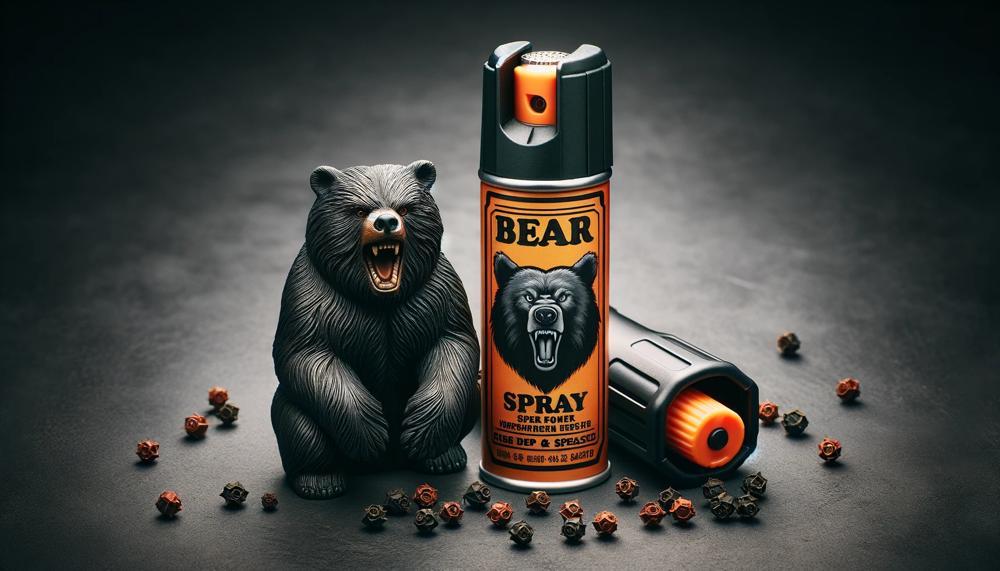
Comparing the Range and Dispersal Patterns of Bear Spray and Pepper Spray
When it comes to fending off unwelcome encounters in the wild or ensuring personal safety on city streets, understanding the range and dispersal patterns of bear spray and pepper spray is key.
Range and Dispersal Patterns: Bear Spray vs Pepper Spray
| Aspect | Bear Spray | Pepper Spray |
|---|---|---|
| Range | 20-30 feet | 10-15 feet |
| Pattern | Wide cloud | Narrow stream/cone |
| Active Ingredient Concentration | Higher capsaicinoid content | Varies (often less than bear spray) |
| Intended Use | Bear deterrence | Personal defense against humans |
| Safety Precautions | Keep out of reach of children, store in a cool place | Keep out of reach of children, store securely |
Bear spray casts a wider net, creating a misty barrier between you and a charging bear, allowing for a more forgiving aim in a high-stress situation. This dispersed pattern can affect a broader area, reducing the need for pinpoint accuracy. Pepper spray, with its narrower reach and stream, requires a more accurate shot, making it more suited for close encounters.
When it comes to dealing with the great outdoors or the concrete jungle, both bear spray and pepper spray serve as trusty shields. But remember, while bear spray can stop a bear in its tracks from a safe distance, pepper spray is the go-to for close-quarter defense against an assailant.
Different Forms of Pepper Spray vs Fog Format of Bear Spray
Pepper spray and bear spray are both self-defense tools that utilize oleoresin capsicum (OC), but they are designed with different purposes and thus come in distinct forms and formats.
Pepper Spray:
| Form | Range | OC Content | Usage |
|---|---|---|---|
| Stream | Approx. 10 feet | Up to 1.33% | Direct aim at an attacker’s face |
| Foam | Approx. 6-8 feet | Up to 1.33% | Clings to the attacker’s face, reducing blowback |
| Gel | Approx. 10-15 feet | Up to 1.33% | Sticks to the attacker, longer-lasting |
Note: Pepper sprays may come in keychain canisters, jogging straps, or disguised containers for ease of access and surprise deployment.
Bear Spray:
| Format | Range | OC Content | Usage |
|---|---|---|---|
| Fog | Up to 35 feet | 2% | Creating a barrier between you and the bear |
Note: Bear spray is typically only available in larger canisters due to the need for extended range and wider coverage area.
Key Differences:
- Potency and Regulation: Bear spray has a higher OC content, capped at 2% by the EPA, making it more potent. It is also considered a pesticide, leading to its universal legality.
- Range and Dispersion: Bear spray is designed to reach further distances and create a fog barrier, which is suitable for deterring large animals. Pepper spray, however, is for closer encounters with humans and often comes in a direct stream.
- Size and Portability: Pepper spray canisters are smaller and more portable, designed for quick access and concealment. Bear spray canisters are bulkier to accommodate more contents for protection against larger threats.
- Moral and Legal Considerations: Using bear spray on humans carries both moral and legal implications due to its increased strength and intended use for animals, not humans.
Conclusion
In conclusion, it is untrue to say that pepper spray and bear spray are interchangeable. Every product has a distinct formulation and set of regulations to address certain hazards in their different surroundings. Bear spray provides you with the necessary safety distance while deterring bears without endangering them in the long run due to its higher dispersion area and lower concentration of capsaicinoids. There is enough data to support its usefulness, which makes it an essential tool for outdoor travelers in bear territory.
Conversely, pepper spray is a close-quarters self-defense tool that renders human assailants swiftly and efficiently unconscious. Its usage is acceptable in self-defense situations and is subject to various legal criteria. Just as using bear spray on a person may have major legal ramifications since it is meant for big animals, using pepper spray on wildlife is improper and may even be unlawful owing to its greater concentration of capsaicinoid.
Selecting the appropriate spray is not only important for your own safety whether venturing into the mountains or traversing an urban jungle, but it’s also a question of legal obligation and treating animals with ethics.
